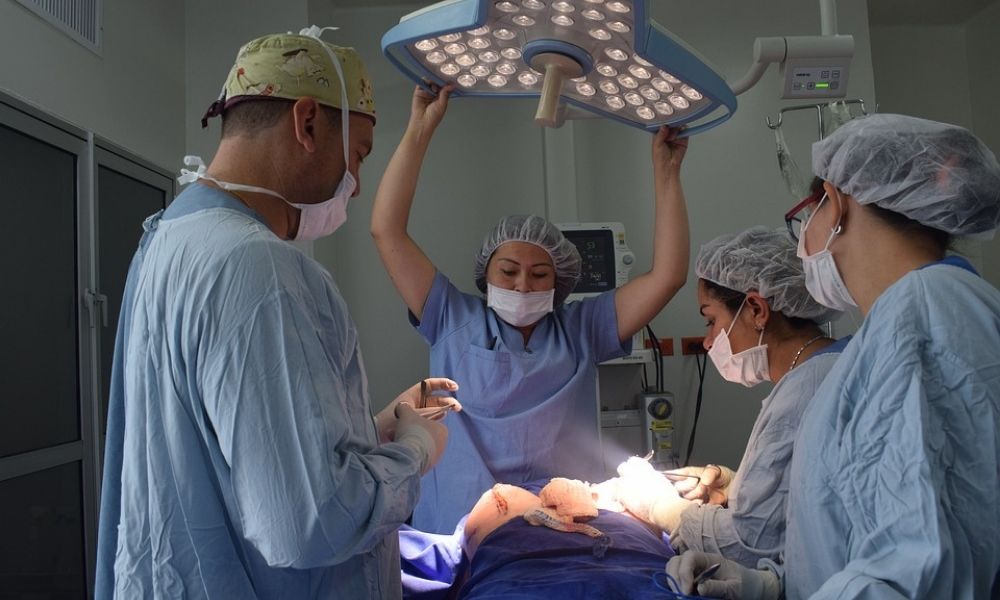
Image Credit: Pixabay
An Ode To Plastic Surgeons On World Plastic Surgery Day
Writer: Ratika Rana
Her primary objective is to inform, promote, educate and cultivate readers through writing.
India, 15 July 2021 4:02 PM GMT
Editor : Madhusree Goswami |
A mountain girl trying to make it big in the city. She loves to travel and explore and hence keen on doing on-ground stories. Giving the crux of the matter through her editing skills is her way to pay back the journalism its due credit.
Creatives : Ratika Rana
Her primary objective is to inform, promote, educate and cultivate readers through writing.
The National Plastic Surgery Day that is celebrated on July 15 every year and will now be celebrated as World Plastic Surgery Day.
A statement released by the Association of Plastic Surgeons(APSI) in India mentioned that the National Plastic Surgery Day on July 15 will now be celebrated as World Plastic Surgery Day. This comes after APSI President Dr Rakesh Khazanchi spoke about the success of this day at the World Council of Leaders. The American Society of Plastic Surgeons organized a meeting of the presidents of the Plastic Surgeons' Association of several countries.. The idea was formulated by Dr Raja Sabapathy, who was the APSI President in 2011. On the day of inauguration in 2011, all plastic surgeons across the country performed one free surgery and helped hundreds of Indians. Since then, every year, surgeons commemorate the event by performing several operations, conducting various camps, and writing their experiences to spread awareness about their profession. India is a proud land of the origin of plastic surgery. The president said that it's a matter of great honour and pride that the National Plastic Surgeon's Day that started in India is recognized by the world now.
Indian Origins
India saw the advent of plastic surgery as far back as 600 B.C. when an Indian physician named Sushruta, widely regarded as the 'father of medicine' and the 'father of plastic surgery, wrote the world's earliest works on medicine and surgery. He was known for his operations and the influential treatise 'Sushruta Samhita', which formed the primary source of knowledge in ancient India. The Samhita also forms the basis of the Hindu science of ayurveda, and some regard it as the 'Great Trilogy of Ayurvedic Medicine'. Skin grafts included transplanting pieces of skin from one part of the body to another. In modern times, surgeons use grafting to restore the protective layer of tissues due to trauma and burns.
World War 1 devastated countries together. There were 37 million casualties. About 16 million soldiers were dead and 21 million were left wounded and scarred for life. Nearly 16 per cent of the wounded had injuries on their faces, and more than a third of them were categorized as 'severe'. A young ENT (Ear, Nose and Tongue) specialist from New Zealand named Harold Gillies saw the devastating impact that the war had on facial features and realized a need for specialized work. He described plastic surgery as a "strange new art". Some of his techniques mirrored the job done centuries ago in India, and the rest were developed by 'trial and error'.
Most Common Types Of Cosmetic Surgeries
There are two types of plastic surgeries commonly known: cosmetic plastic surgery and reconstructive surgery. Cosmetic plastic surgery is performed to enhance the overall cosmetic appearance by reshaping and refiguring the normal anatomy to make it visually more appealing. This type of surgery is not considered necessary medically. Breast augmentation, breast lifting, liposuction and facelift are some commonly performed procedures. In contrast, reconstructive surgeries are performed to restore function and appearance of normal appearance created by congenital disabilities, trauma or medical treatments for diseases like cancer. Palate repair and burn injuries are examples of reconstructive surgeries. Doctors suggest undergoing reconstructive surgeries, and they are covered under medical health insurance as well.
India has more than 2,000 plastic surgeons and ranks fourth in the world. NDTV reported that a survey conducted by the International Society of Aesthetic Plastic Surgery that ranked India amongst the top five preferences in the world in terms of the number of people going for surgical and non-surgical procedures to enhance their facial or physical features. The survey included the top 25 countries where more than 70 per cent of the world's plastic surgeries are performed.
Astonishing Figures
A cosmetic centre reported that 1.8 million cosmetic surgical procedures were performed across the world in 2018. About 15.9 million minimally invasive procedures were also performed in the same year. Lately, the number of people opting to undergo plastic surgeries have been on the upswing. People are always on digital media and click pictures of almost everything, including themselves. When we scrutinize ourselves, we tend to find more faults than ever. In fact, the phenomenon of people requesting procedures to resemble their digital image has been referred to as "Snapchat dysmorphia". The term was coined by the cosmetic doctor Tijion Esho, founder of the Esho clinics in London and Newcastle. He had noticed that where patients had once brought in pictures of celebrities with their ideal nose or jaw, they were now pointing to photos of themselves.
As medical technology is advancing every day, surgical procedures are becoming more affordable. Gone are the days when cosmetic surgeries were a thing for the uber-wealthy. Moreover, body image is a huge deal now. The age group that showed the maximum willingness to undergo cosmetic surgery is that of 35 to 50 years and the most common procedures were breast augmentation, liposuction and tummy tuck. In their study of 2014, the American Society of Plastic Surgeons (ASPS) stated that 92 per cent of the surgeries were performed on women, while the remaining 8 per cent went to men. In that year, 13.6 million cosmetic procedures were performed and men accounted for a mere 1.3 million.
Youth, women and men have become more aware of the pros and cons of undergoing aesthetic and reconstructive plastic surgeries. Advanced technology has made it possible for people to undergo treatment without experiencing any pain.
Reasons For Increased Cosmetic Surgeries
One of the main reasons that several youngsters are opting for such surgeries in India and abroad is because of the influence of Bollywood and Hollywood celebrities. The icons are scrutinized for every little physical feature of theirs. Therefore, to better appeal to the public eye, they undergo surgeries. The most populous countries globally, China and India, are plastic surgery capitals in the world. However, the type of surgeries patients choose to undergo differs based on demography, acceptance, cost and follow-up of the treatment. What once began as scraps of skin taken from a healthy part of the body has now become an industry attracting hundreds and thousands of interested individuals. India has always boasted about a long and thriving history of medical treatments. The acceptance of the National Plastic Surgery Day globally is another feather in the country's cap.
Also Read: IT Executives Cherry-Pick Offers, Demand Up To 70% Hike To Switch Jobs
 All section
All section














